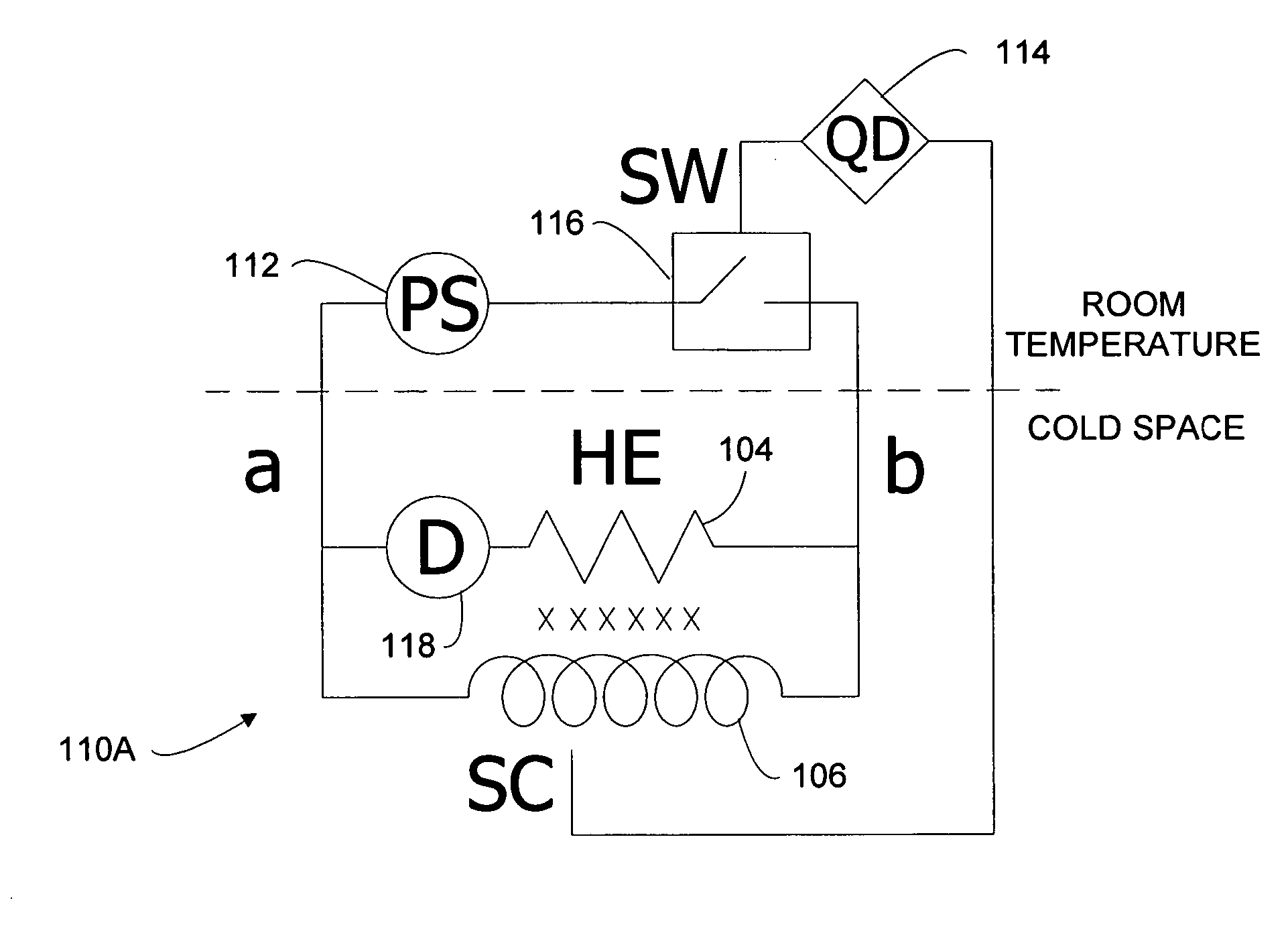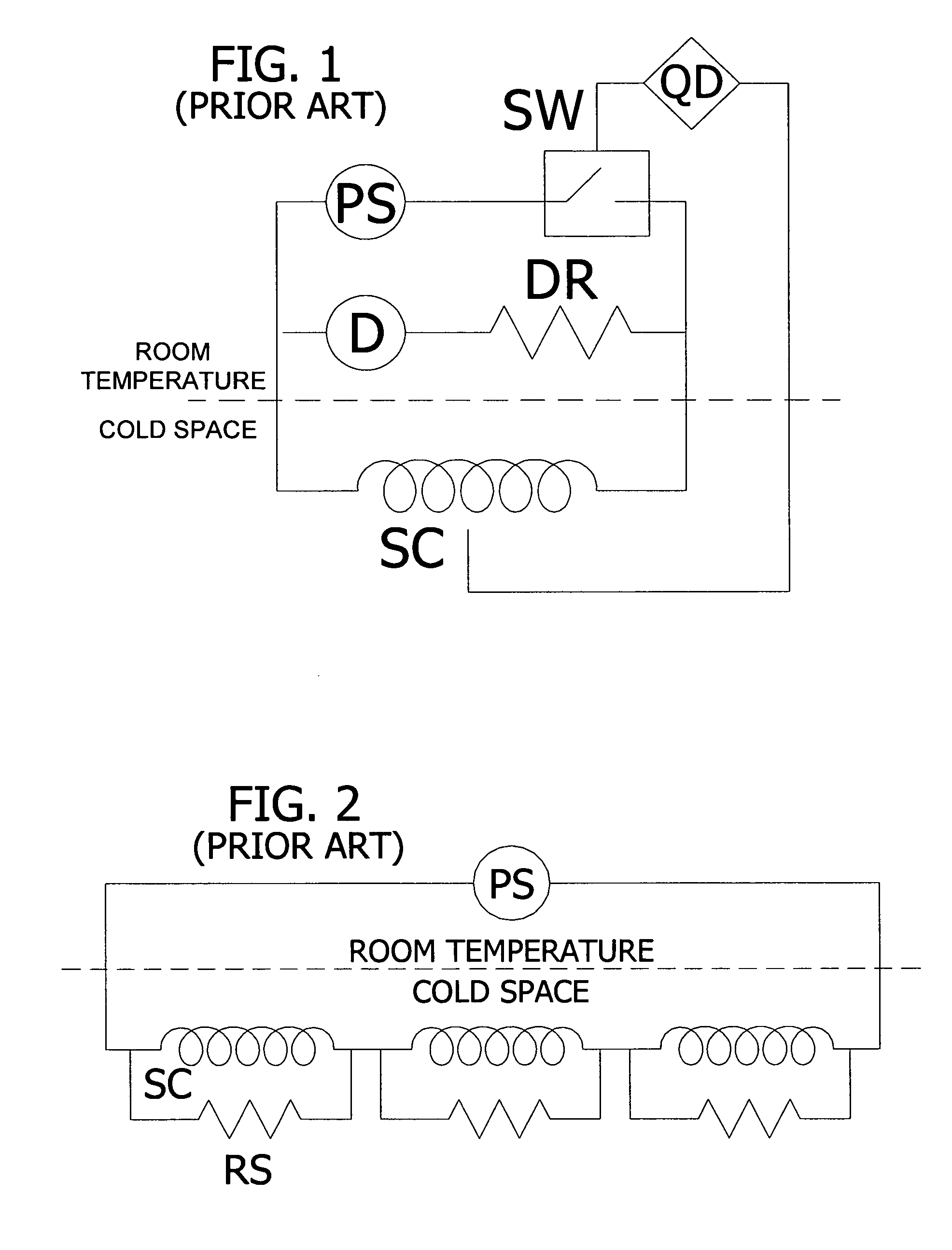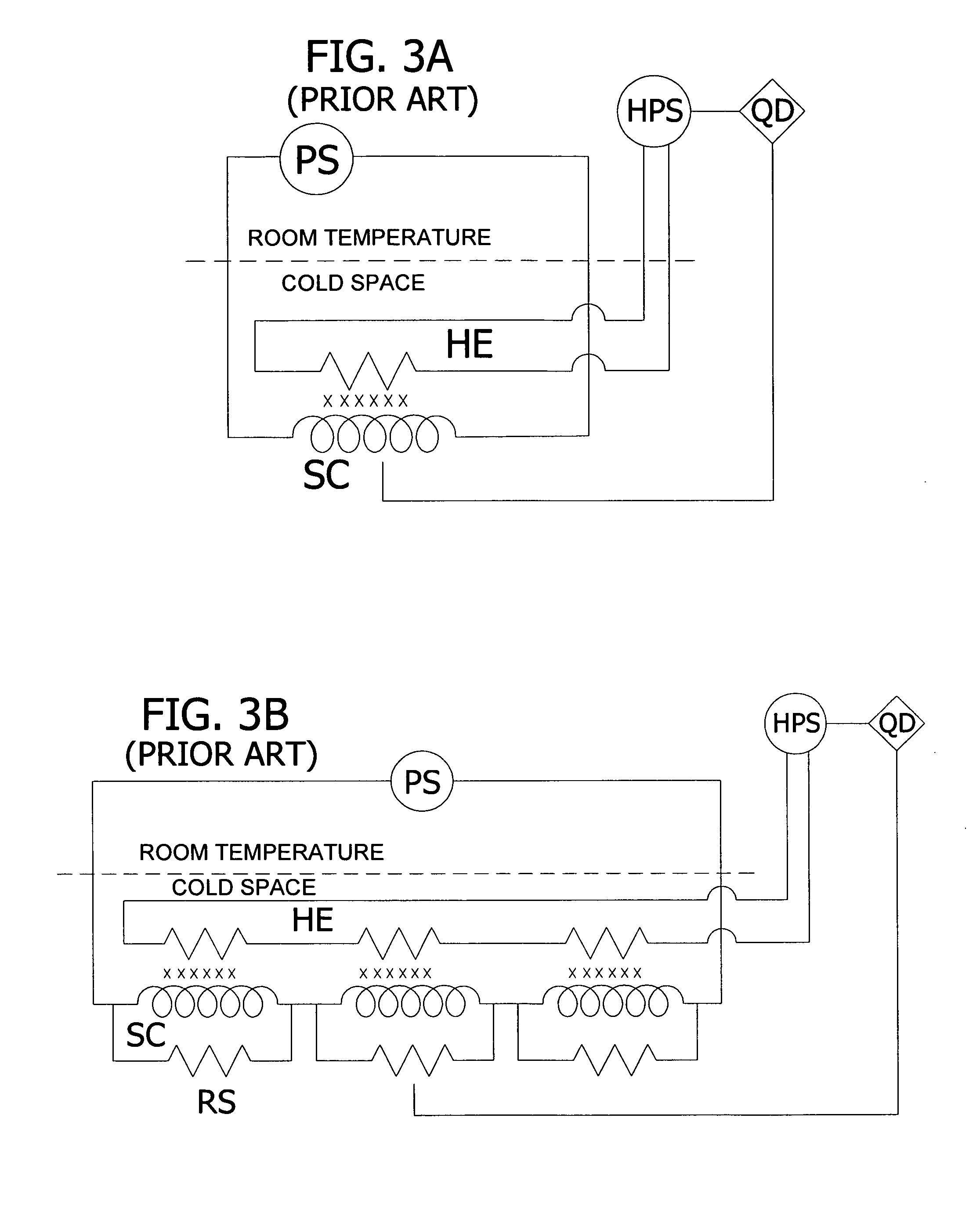Quench protection of HTS superconducting magnets
a superconducting magnet and quench protection technology, applied in the field of superconducting magnets, can solve the problems of discharge of magnets, discharging of magnets, and magnet to a mode of failure, and achieve the effect of effective quench protection, improved active protection of superconducting coils, and reduced circuit breaker switch voltag
- Summary
- Abstract
- Description
- Claims
- Application Information
AI Technical Summary
Benefits of technology
Problems solved by technology
Method used
Image
Examples
example
[0099] Coils containing HTS conductor are capable of operating at relatively high temperature, including a range of temperature for cryogenic nitrogen, 65 K to 77 K. The analysis is applied to a set of stand alone solenoid coils assumed to be wound from YBCO composite tape superconductor in a pancake configuration. The examples further demonstrate the heater design, and serve to provide a comparison between the inventive protection circuit 110 of FIGS. 12A and 12B, and the prior art external dump resistor circuit of FIG. 1.
[0100] The analysis is given for two solenoids defined by an inner winding radius a1, outer radius a2 and winding length 2b , as given in Table IV of APPENDIX B. The dimensions are such as to give a central field of 3.6 T for an average current density Jave over the winding pack of 100 A / mm2 and 150 A / mm2 in Case I and Case II, respectively. The magnetic stored energy per unit volume of the windings ev, is given in the table for the two coils, together with an av...
PUM
 Login to View More
Login to View More Abstract
Description
Claims
Application Information
 Login to View More
Login to View More - R&D
- Intellectual Property
- Life Sciences
- Materials
- Tech Scout
- Unparalleled Data Quality
- Higher Quality Content
- 60% Fewer Hallucinations
Browse by: Latest US Patents, China's latest patents, Technical Efficacy Thesaurus, Application Domain, Technology Topic, Popular Technical Reports.
© 2025 PatSnap. All rights reserved.Legal|Privacy policy|Modern Slavery Act Transparency Statement|Sitemap|About US| Contact US: help@patsnap.com



